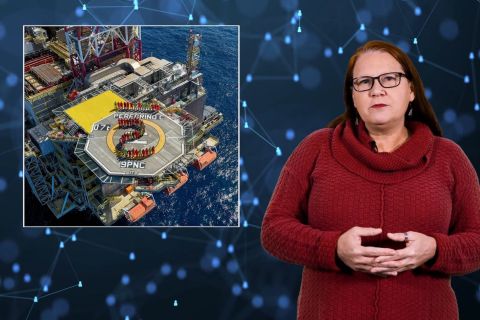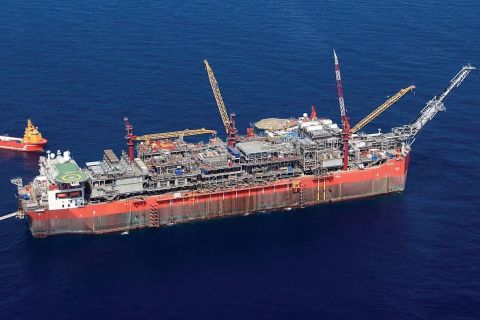
HOUSTON—It is not clear when the gap between buyers and sellers will close this year, enabling sellers to implement exit strategies—or when the sales will be forced due to low oil prices. But lessons from four successful executives who’ve exited in the past few years can pave the way. Each of them sold their companies during a market high point when valuations were robust.
Always start with the end in mind, said Frank McCorkle, CEO and co-founder of TreadStone Energy Partners, which was sold for $715 million after receiving initial backing from Kayne Anderson Energy Funds for $50 million in 2011. The company grew production in three east Texas counties to 12,000 bbl/d through drilling and recompletions.
McCorkle outlined three ways to exit. First, there are partial exits where the original E&P company becomes a nonoperated participant in a new joint venture with new partner(s), or it may continue to operate the venture. Second, there are straight exits where the E&P builds assets that management knows will be attractive to another company, possibly in order to do an IPO. In this case the E&P builds with the exit in mind from the start.
Finally, he said, there are so-called extended exits, where the E&P sells down some of its PDP assets on a rolling basis with agreed purchase terms, or, it is recapitalized based on PDP values and then continues to develop those PDPs for a sale later on.
“This business is like a horse race. You’ve got to come out of the gate strong and fast,” said Stacey A. Cude, president and CEO of Rio Oil and Gas LLC. He founded the company in June 2013, then sold it quickly for $585 million in September 2014 to two entities. In the process, he delivered a 45% internal rate of return and a three-times return on investment (ROI) to his investors, led by Houston private equity firm Quantum Energy Partners. “We grew this to a deliberate exit, with the view to target a premier buyer pool, which was the Permian pure-play public companies that were just starting to drill horizontals.”
Know what your business needs to look like for a sale, and the work to get it there, he said. Cude has since founded Rio II.
Think about cash flow targets, not just production numbers, advised Matt McCarroll, president and CEO of Fieldwood Energy LLC. He founded his company in 2013 with backing by Riverstone Holdings. Since then Fieldwood has acquired two large packages on the Gulf of Mexico shelf for an aggregate $4.5 billion. This was possible in part due to his track record, having built and then sold Dynamic Offshore resources LLC, which he sold to SandRidge Energy in 2012 for $1.3 billion.
The largest exit of those speaking on the panel was that of Bob Reeves, former chair, president and CEO of Athlon Energy, the Permian-focused company acquired by Encana for more than $7 billion last year. The buyer was highly motivated to gain entry into a new core area that was oily, since Encana had been too heavily weighted to natural gas and was transitioning its portfolio.
Reeves started with a commitment of $200 million from Apollo. When do you sell? For Reeves, an inflection point was reached when the rates of return from horizontal Permian wells started to outpace the vertical wells, and his company IPO’d in August 2013. Successes translated into higher reserve numbers that began to attract large buyers such as Encana.
Each speaker said timing can be quite unpredictable, even surprising. The very day Reeves closed on equity and debt offerings totaling $1.1 billion (to fund an acquisition Athlon had made), he was approached by an intermediary about Encana’s interest. From there the sale moved fast.
It really depends on the company, the assets in question and market timing. The market can change rapidly, as we’ve seen since the price of oil crashed in 2014. Is there a herd mentality developing where buyers are in a rush , such as we saw in shale plays in the past five years, or is the market hesitant? How much risk does the seller wish to take to continue drilling the assets, before a sale process is begun?
A wide spectrum of buyers includes people who buy undeveloped acreage and flip it fairly soon, to people who go further to develop proved acreage and thus create a lot of PDPs and PUDs to attract the right buyer later on.
Market prices and timing are not under your control, but the nature of the assets can be controlled. You must acquire the right assets that play to your team’s strengths, then prepare them for a divestiture, the panelists said, and be prepared to exit at any time. A contiguous acreage position is ideal, McCorkle said.
Recommended Reading
TotalEnergies Starts Production at Akpo West Offshore Nigeria
2024-02-07 - Subsea tieback expected to add 14,000 bbl/d of condensate by mid-year, and up to 4 MMcm/d of gas by 2028.
Tech Trends: SLB's Autonomous Tech Used for Drilling Operations
2024-02-06 - SLB says autonomous drilling operations increased ROP at a deepwater field offshore Brazil by 60% over the course of a five-well program.
Seadrill Awarded $97.5 Million in Drillship Contracts
2024-01-30 - Seadrill will also resume management services for its West Auriga drillship earlier than anticipated.
Well Logging Could Get a Makeover
2024-02-27 - Aramco’s KASHF robot, expected to deploy in 2025, will be able to operate in both vertical and horizontal segments of wellbores.
Remotely Controlled Well Completion Carried Out at SNEPCo’s Bonga Field
2024-02-27 - Optime Subsea, which supplied the operation’s remotely operated controls system, says its technology reduces equipment from transportation lists and reduces operation time.





